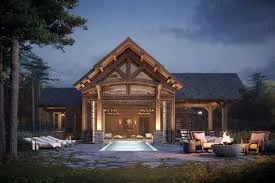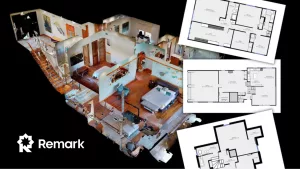The Competitive Edge: Why Listings with 3D Visualization Get More Serious Inquiries, Faster
Go Back To Previous PageReal estate has always been visual, but in today’s market, it’s almost entirely driven by what buyers see first. People scroll through listings the same way they scroll through social media: fast, distracted, and with high expectations. If something doesn’t grab them immediately, they move on. Professional 3D visualization changes how those first few seconds play out. It doesn’t just make a listing look polished. It shapes the type of buyer who notices it, how seriously they take it, and how quickly they decide to reach out. Let’s discuss Listings with 3D Visualization.
fast, distracted, and with high expectations. If something doesn’t grab them immediately, they move on. Professional 3D visualization changes how those first few seconds play out. It doesn’t just make a listing look polished. It shapes the type of buyer who notices it, how seriously they take it, and how quickly they decide to reach out. Let’s discuss Listings with 3D Visualization.
Attracting buyers who are actually ready to act
Most agents know the difference between “interest” and genuine interest. A listing with average photos can still collect a handful of inquiries — but many of these conversations go nowhere. Some people are comparing prices out of curiosity. Others are checking what’s on the market without any intention of buying soon. Many aren’t even sure what they’re looking for.
High-quality 3D visualization filters this noise. When someone stops to explore detailed renderings or slowly walks through a virtual tour, they’re already more intentional. They’re not zoning out and scrolling. They’re already picturing their life there. They’re thinking about whether the kitchen works for the way they cook, if the living room fits the rhythm of their days, or whether the bedrooms feel private enough. They linger because, in their mind, the place is already becoming an option — not just another listing.
By the time they reach out, their questions aren’t vague. Instead of “Tell me more about this property,” you get messages like “We like the open-plan living area — can we come see it this week?” These are people who have already weighed the pros and cons internally. They contact you because the listing fits what they want, not because they’re collecting information.
Why interior Listings with 3D Visualization changes everything
Exteriors get attention, but interiors spark attachment. Most buyers can forgive a bland façade, but if they step inside and can’t imagine themselves living there, the deal is already half-dead. Real photos, especially those with empty spaces, often confuse more than they clarify: distorted wide angles, uneven floors in images, poor lighting, and a lack of sense of scale.
Interior 3D renderings solve this instantly. They show the home with realistic proportions, thoughtful furniture arrangements, believable lighting, and a sense of mood. Buyers can see how the space could feel, not just how it looks when photographed.
Interactive content strengthens that connection even further. Virtual tours let people explore at their own pace. They can “walk” down hallways, peek into corners, turn around to understand the flow, and get a sense of privacy between rooms. For premium listings, short 3D animations can highlight standout details — a dramatic staircase, a sliding glass wall, or a sunlit terrace — in a way that static images can’t.
This isn’t just visual information; it’s emotional context. When buyers start imagining life inside the home, they’re already halfway into the decision-making process.
Exterior visuals: controlling the first impression
Exterior images often determine whether someone even bothers to look inside. But photography is unpredictable. If the weather is dull, the landscaping unfinished, or the home still under construction, the photos can’t capture the property’s potential.
3D exterior visualization services eliminate all of this uncertainty. They present the home in perfect light — literally —with clean skies, consistent shadows, lush landscaping, neat pathways, and angles that highlight its architectural strengths. Buyers see a finished, inviting home, even when the real-world structure is still months away from completion.
This doesn’t just make the listing look better. It builds trust. A seller who invests in a professional presentation signals seriousness and transparency. When buyers can clearly see materials, shapes, proportions, and details, they feel more confident scheduling a viewing. The result is a shorter time between inquiry and showing, and fewer hesitations along the way.
materials, shapes, proportions, and details, they feel more confident scheduling a viewing. The result is a shorter time between inquiry and showing, and fewer hesitations along the way.
Aerial views: giving buyers the context they can’t get from the ground
A house is never just a house. Its surroundings — the lot, the neighborhood, the street — influence a buyer’s feelings as much as the interior layout. Traditional photography cannot effectively communicate these broader elements. You don’t see how close neighbors are, whether the yard slopes, or how much privacy the terrace actually has.
Aerial 3D visualization fills this gap perfectly.
It shows:
• how the property sits on its lot
• the shape and boundaries of the land
• spacing between homes
• access roads and driveways
• the character of the neighborhood
• natural features like trees, water, and terrain
For waterfront properties, this is a transformational change. Ground photos show the view; aerial rendering shows the entire shoreline relationship — depth, width, dock possibilities, neighboring structures, and the overall placement of the home along the water.
Remote buyers rely on this even more. Investors and out-of-town buyers often make decisions based on limited visits. Aerial visuals give them clarity they can’t get otherwise.
Solving objections before buyers even ask
Every buyer has concerns: Is the layout practical? Does the master suite feel too small? How bright is the living room? Does the kitchen make sense for everyday life? Typically, these questions arise during showings — or prevent people from scheduling one at all.
Comprehensive 3D visualization gives buyers answers early.
They explore rooms from multiple angles. They see how spaces connect. They evaluate whether the home fits their routines and preferences. They examine proportions, scale, ceiling height, and even the direction of sunlight.
Their internal objections — the ones that quietly kill interest — get resolved before they ever speak with an agent. The inquiry they eventually send is already filtered through their own criteria. They’re reaching out because the home works for them.
Why 3D visualization is no longer optional
Not long ago, 3D visualization was considered a luxury reserved for luxury homes. Today, it has become the expectation. Markets evolve rapidly, and as 3D visuals become more common, listings relying on basic photography start to look out of place.
Properties supported by strong 3D materials consistently:
• sell faster
• attract more qualified leads
• require fewer showings
• receive offers closer to asking price
The best results are achieved by combining multiple visualization formats. Exterior renderings create the “stop and look” moment. Interior visuals make spaces feel livable. Aerial perspectives provide essential context. Virtual tours create immersion and confidence.
Not every property requires everything, but selecting the right combination significantly increases the likelihood of the right buyer viewing the listing at the ideal moment.
The real advantage: not more buyers, but better ones
The most significant shift 3D visualization creates is in buyer quality. It replaces shallow interest with focused interest — people who know what they want and are closer to making decisions.
In a crowded, competitive marketplace, that’s the edge that matters.
The goal isn’t just to gain more views or messages.
It’s conversations with informed, serious buyers who are ready to act.
And that’s precisely what professional 3D visualization delivers.


